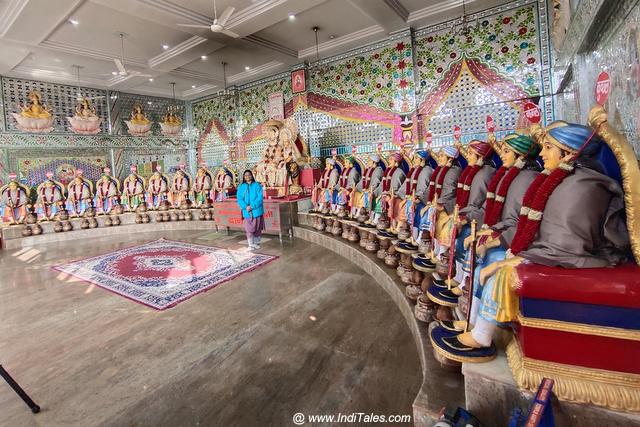
With urban landscapes rapidly evolving, incorporating sustainability principles in real estate development is no longer optional but essential. According to design experts, sustainability and luxury are not mutually exclusive. A property can be both sustainable and luxurious.
 According to design experts, sustainability and luxury are not mutually exclusive. A property can be both sustainable and luxurious.(Souptik Datta )
According to design experts, sustainability and luxury are not mutually exclusive. A property can be both sustainable and luxurious.(Souptik Datta )
“A significant portion of a project’s cost is attributed to real estate. As land becomes commodified, challenges arise. In the coming years, we must prioritize habitat over the economy. Affordability and luxury are oxymorons—luxury, by definition, is exclusive to a select few, especially in India,” said architect Akshat Bhatt of Architecture Discipline, on the sidelines of the 13th edition of India Design ID 2025 being held in Delhi.
Similarly, with urban landscapes rapidly transforming across cities, experts say adopting sustainability principles in real estate development is no longer optional but essential.
Read More: Luxury real estate market trends: Developers turn to interior design to make apartments more exclusive
Sustainable elements typically come at a higher price point—more than ₹500 per sq. ft. to furnish a middle-class home, according to Bhatt. This may translate to over ₹1 crore to furnish a 2,000 sq. ft. apartment.
Bhatt emphasizes that sophisticated design is about using simple materials in refined ways rather than relying on expensive, rich elements. “This is not a challenge—we already incorporate it into contemporary design. Luxury is often misunderstood. It’s about balance in one’s choices. For instance, many luxury apartments in India today lack large wardrobe spaces,” he adds.
Designer Jahan Tahiliani believes sustainability and luxury are not mutually exclusive. “A property can be both sustainable and luxurious—it all comes down to design and construction efficiency. By optimizing processes, we can conserve more energy. This approach is gaining momentum in India,” he concludes.
Read More: Year-end 2024: Real estate emerged as a new status symbol, luxury homes the top investment choice of the rich
Changing perspectives on luxury real estate
Ace designer Tarun Tahiliani believes that accessible luxury is already present in India. “Luxury today isn’t about logos or carrying a designer bag—it’s about how something feels. Globally, luxury brands are now focusing on value propositions. However, in India, I think we are much smarter, and I see greater confidence in the younger generation to redefine how we perceive luxury,” he said.
Experts note that cities like Delhi and Bengaluru are witnessing a significant rise in luxury residences. “Especially after COVID, people realized the importance of investing in their homes and spending more time in them. The luxury real estate trend has evolved over the past 5–7 years, with buyers now seeking residences that offer extensive amenities and accessibility. Trust is also a key factor in their decisions,” said Jahan Tahiliani, CEO of Tahiliani Homes.
Can design be made affordable?
India’s home decor market is currently valued at over $32 billion. However, the sector remains largely unorganized, with less than 10% controlled by organized players.
Bhatt believes that design can be rationalized and made more affordable. “The fundamental responsibility of design is to foster a sense of well-being, create meaningful connections, and shape habitats that support mental and physical health. We are already witnessing a democratization of space structuring and programming and are working towards finding the right solutions for the next 50 years,” he added.






